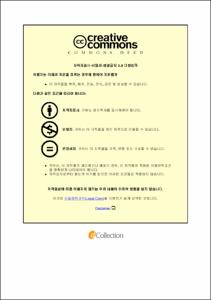참조기 어업관리를 위한 생물경제학적 분석
- Abstract
- Small yellow croaker (Larimichthys polyactis) is one of the most popular commercial fish species in the Republic of Korea. It has been taking important roles in Korean people’s lives since Goryeo Dynasty. In the present, it also takes significant roles for both consumers and producers as it takes 9% of total marine fish’s production amount and 43% of the total output of the offshore Gill-net in Korea, respectively. However, the catch of small yellow croaker has been being unstable. Especially, the catch amount of the species has been diminishing since 2011.
However, there is no direct policy for restricting the amount of catch such as Total Allowable Catch (TAC). In this situation, this study is aimed to evaluate the TAC policy and to find out effective annual TAC quota for small yellow croaker using a bioeconomic modeling method. To evaluate the bioeconomic model, surplus production models are applied to assess the biomass status of small yellow croaker.
In the analysis, a generalized linear model (GLM) is conducted for standardizing catch per unit effort (CPUE) data of three different types of fishing methods (Gill-net, Stow-net, Pair-net). Process-error model (CY&P model), Observation-error model, and Bayesian state-space model are used to fit the surplus production models to observed data for comparing and selecting a more appropriate model. Root mean square error (RMSE), R2, and Kendall’s are calculated for comparison among models.
Results show that the Bayesian state-space model is estimated to be the most reliable among the models. According to the Bayesian state-space model, the maximum sustainable yield (MSY) and the biomass level at the MSY (BMSY) of small yellow croaker are estimated to be 23,920 tons and 107,000 tons respectively. Furthermore, the current biomass of the species is recently decreasing and it is assessed to be only 85% of BMSY. Therefore, policy efforts are needed to restore the resource of the commercially important fish.
According to the bioeconomic model results depending on the Bayesian state-space model, if the amount of TAC is set as 24,960 tons per year, the biomass of small yellow croaker could be decreased. However, if the quantity of TAC is set under 22,800 tons per year, the biomass could be sustainable. In addition, it is analyzed that the annual TAC could be set over 15,829 tons for ensuring the positive profits of Gill net and Stow net fisheries.
- Issued Date
- 2020
- Awarded Date
- 2020. 2
- Type
- Dissertation
- Publisher
- 부경대학교
- Affiliation
- 부경대학교 대학원
- Department
- 대학원 해양수산경영학과
- Advisor
- 김도훈
- Table Of Contents
- Ⅰ. 서론 1
1. 연구의 배경 및 목적 1
2. 연구의 방법 및 내용 4
Ⅱ. 선행연구 5
1. 참조기 자원평가 및 관리효과 분석에 관한 선행연구 5
2. 자원평가 방법에 관한 선행연구 10
Ⅲ. 참조기 어업 현황 15
1. 생산 현황 15
2. 경영 현황 31
Ⅳ. 분석 방법 및 자료 36
1. 분석 자료 36
2. 자원평가모형 45
3. 생물경제학적 분석 53
Ⅴ. 분석 결과 57
1. 참조기 자원평가 결과 57
2. 참조기 생물경제학적 분석 결과 64
Ⅵ. 요약 및 결론 67
참고문헌 72
- Degree
- Master
- Files in This Item:
-
-
Download
 참조기 어업관리를 위한 생물경제학적 분석.pdf
기타 데이터 / 2.14 MB / Adobe PDF
참조기 어업관리를 위한 생물경제학적 분석.pdf
기타 데이터 / 2.14 MB / Adobe PDF
-
Items in Repository are protected by copyright, with all rights reserved, unless otherwise indicated.